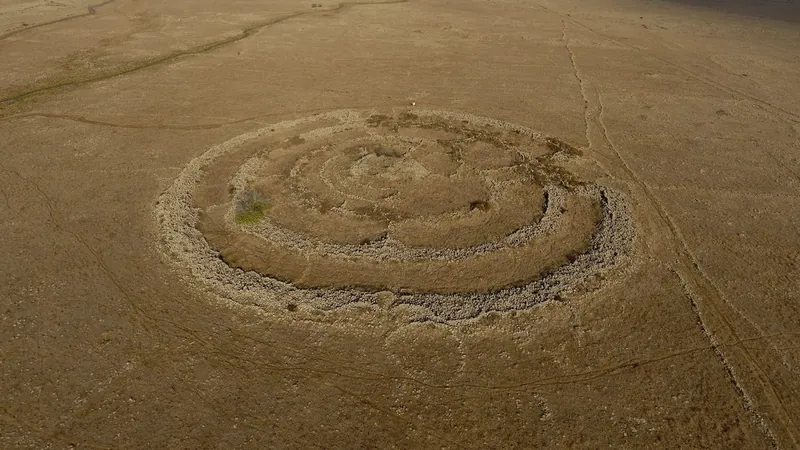
Shocking Discovery: Ancient Stone Circles in Golan Heights May Not Be Celestial Observatories!
2025-01-11
Author: Wai
Introduction
A recent study has stirred the pot over the ancient stone circle of Rujm el-Hiri in the Golan Heights, leading experts to challenge the belief that this magnificent prehistoric site served as an astronomical observatory. This eye-opening revelation comes from an analysis of satellite imagery, which was published on November 14 in the journal Remote Sensing.
Background of Rujm el-Hiri
Dating back over 6,000 years, Rujm el-Hiri, meaning "Heap of Stones of the Wildcat" in Arabic, is one of the many enigmatic structures that pepper the region — a territory steeped in conflict, claimed by both Israel and Syria. Initially, researchers speculated that the gaps within the stone circle were strategically aligned with astronomical events, much in the same spirit as England's famed Stonehenge.
New Findings
However, geophysical studies now suggest that the entire landscape surrounding Rujm el-Hiri, along with the nearby Sea of Galilee, has undergone significant movements over the millennia. Lead author Olga Khabarova, a space physicist from Tel Aviv University, explained that their new findings indicate these geological shifts may have distorted any original astronomical alignments that the structure might have had.
"Rujm el-Hiri has not remained in its original location," Khabarova stated. "It appears to have shifted tens of meters over thousands of years, prompting speculation about its ceremonial function in ancient times."
Counterarguments
But not everyone is convinced of this new academic narrative. E.C. Krupp, director of the Griffith Observatory and a noted authority on ancient astronomy, argues that the new study lacks concrete data to fully dismiss Rujm el-Hiri's potential as an astronomical site. The original theory proposing the site's celestial alignments did not claim it was a full-fledged observatory but suggested that it served a ritualistic purpose incorporating certain celestial elements.
Additionally, the recent analysis, while hinting at shifts and rotations in the landscape, has been critiqued for not quantifying these movements effectively. As a result, ambiguous questions linger regarding whether Rujm el-Hiri could have indeed once been aligned with significant astronomical events.
Physical Description
The stone circle, known as Gilgal Refaim in Hebrew ("Wheel of Giants"), spans about 500 feet (150 meters) in diameter and still comprises towering basalt heaps standing up to 8 feet (2.5 meters) high. Although this ancient wonder is open to the public, reaching it requires navigating rugged dirt roads, which discourages many from visiting. The site once thrived amidst the rich environmental dynamics of the Golan, contrasting starkly with the current rugged terrain.
Significance of the Region
In addition to Rujm el-Hiri, the region boasts thousands of other prehistoric structures, including agricultural enclosures and burial mounds, indicating that it was once a thriving hub of ancient human activity.
Conclusion
As the debate about the purpose of Rujm el-Hiri rages on, one thing is certain: this ancient marvel continues to intrigue archaeologists and historians alike, beckoning them to uncover the secrets of our ancestral past. What will the next chapter of this archaeological saga reveal? Stay tuned for more updates!

 Brasil (PT)
Brasil (PT)
 Canada (EN)
Canada (EN)
 Chile (ES)
Chile (ES)
 Česko (CS)
Česko (CS)
 대한민국 (KO)
대한민국 (KO)
 España (ES)
España (ES)
 France (FR)
France (FR)
 Hong Kong (EN)
Hong Kong (EN)
 Italia (IT)
Italia (IT)
 日本 (JA)
日本 (JA)
 Magyarország (HU)
Magyarország (HU)
 Norge (NO)
Norge (NO)
 Polska (PL)
Polska (PL)
 Schweiz (DE)
Schweiz (DE)
 Singapore (EN)
Singapore (EN)
 Sverige (SV)
Sverige (SV)
 Suomi (FI)
Suomi (FI)
 Türkiye (TR)
Türkiye (TR)
 الإمارات العربية المتحدة (AR)
الإمارات العربية المتحدة (AR)